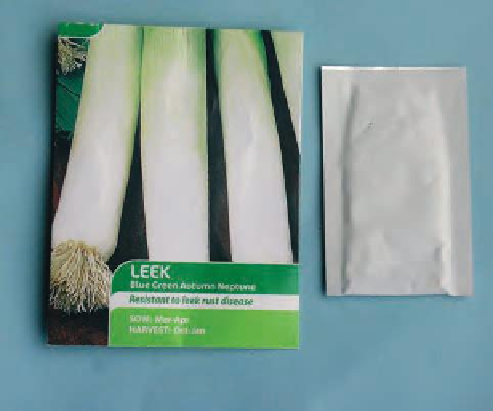Agriculture Reference
In-Depth Information
often assuming twice the size of the dry seed and
this is a passive process, that is, it does not require
energy. A continuous water supply is now required
if germination is to proceed at a consistent rate.
Eventually the radicle breaks through the seed coat
(testa) and emerges followed by the plumule.
X
Oxygen
is essential for respiration (see p. 116). On
imbibition, respiration rates increase dramatically
as the seed's food stores, the cotyledons or
endosperm, are broken down to produce energy
and building materials for rapid cell division. The
growing medium, whether it is outdoor soil or
compost in a seed tray, must not be waterlogged,
because oxygen would be withheld from the
growing embryo.
X
Correct temperature
is a very important
germination requirement, and is usually specifi c
to a given species or even cultivar. It acts by
fundamentally infl uencing the activity of the
enzymes involved in the biochemical processes
of respiration, which occur between 0°C and
40°C. However, species adapted to specialized
environments may respond to a narrower range of
germination temperatures. For example,
Cucumis
sativus
(cucumbers) require a minimum temperature
of 15°C and
Solanum lycopersicum
(tomatoes)
10°C, whereas
Latuca sativa
(lettuce) germination
may be inhibited by temperatures higher than 30°C,
and in some cultivars a period of induced dormancy
occurs at 25°C. Some species, such as mustard
(
Brassica hirta
syn.
Sinapis alba
), will germinate in
temperatures just above freezing and up to 40°C,
provided they are not allowed to dry out.
Typical temperature ranges for various plants are
given in Table 5.1. Temperate, winter-l owering
and shade-tolerant plants generally germinate
at lower temperatures than summer-l owering
plants, tropical plants and plants that require full
sun. Bulbs, such as tulip, germinate and fl ower in
spring before temperatures become too high, their
dormant season being in the summer. Turf grasses
used in Britain and Ireland germinate at quite low
temperatures.
X
Light
is a factor that may infl uence germination in
some species, but most species are indifferent.
Seed of
Rhododendron
,
Veronica
and
Phlox
is
inhibited in its germination by exposure to light,
while that of celery, lettuce, most grasses, conifers
and many herbaceous fl owering plants is slowed
down when light is excluded. When a viable seed
fails to germinate because any one of these factors
is not suitable (e.g. water is not present or the
temperature is too low), the seed is said to be
'quiescent'.
Figure 5.3
A seed packet with a waterproof and
airtight insert containing the seed
maintains a constant low water content (and low oxygen
levels) in the seeds Figure 5.3 (see respiration p. 116).
5
A
viable
seed has the potential for germination
when the required external conditions are
supplied. A
quiescent
seed is a viable seed
which does not germinate because the
environmental requirements (water, oxygen, a
suitable temperature) are not present. A
dormant
seed is one that does not germinate even though
the environmental conditions are suitable.
Seed germination
For seeds to germinate successfully, a number of
environmental conditions must be supplied:
X
water
X
oxygen
X
correct temperature
X
light (some).
Seed
germination
is defined as the emergence
of the young root or radicle through the testa,
usually at the micropyle.
X
Water
is needed to trigger germination. The
water content must be increased from around
10% in the dry seed to 70% or more. Water is
initially absorbed (imbibed) into the structure of the
seed coat or testa in a way similar to a sponge,
softening it and is followed by uptake through a
pore in the testa called the micropyle. The cells of
the seed take up water by osmosis (see p. 120),




